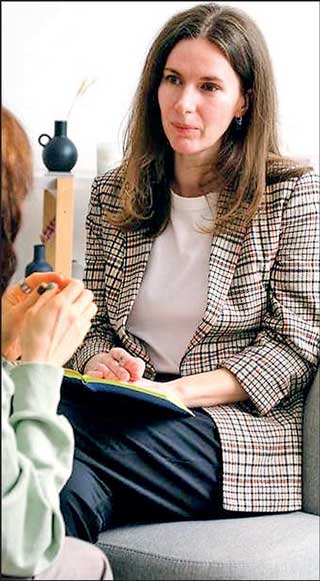Monday Nov 24, 2025
Monday Nov 24, 2025
Wednesday, 1 December 2021 00:00 - - {{hitsCtrl.values.hits}}
 |
| Tough conversations unlock pent up potential and possibilities for you and your organisation
|
“When you avoid tough conversations, you trade short-term discomfort for long-term dysfunction,” said leader, speaker and coach Peter Bromberg.
The purpose of this article is to help you have tough conversations (TCs) with ease, confidence, and comfort, so that you not only avoid dysfunction but build robust and successful organisations and teams.
I believe that TCs help organisations and relationships develop and thrive. In my coaching practice where TC role plays are a staple, I come across many leaders who are uncomfortable, shy, nervous, or embarrassed when confronted with a TC, like giving negative feedback to one of their subordinates. This should not be the case, because having TCs unlocks pent up potential and possibilities for you and your organisation. If you are still doubtful about the value of having TCs, try to maintain a relationship or run a team at optimum efficiency when you have deep-seated concerns or negative thoughts about the other person. It just doesn’t work.
So, here is a roadmap you can follow to have tough conversations (TCs).
First, you have to decide whether to have a TC or not. Are you happy to live with the status quo or do you want to change it?
Second, if you want to change the status quo and go ahead with the TC, then you have to examine your current emotional state. If you cannot bring a calm, balanced, neutral, and helpful emotional state to the TC, then you are not yet prepared to have the TC. Because the aim of having a TC is not to belittle, demoralise, insult, or hurt the other person. The aim of a TC is to bring about positive behavioural change, or get buy-in from the other party to your point of view.
Third, the TC must be held in a private setting that allows for undisturbed, two-way communication. TCs can be held via online platforms like zoom where you can see each other face-to-face virtually, but you must never have TCs via email or any other written communication.
Fourth, you and the other person must have sufficient time for the TC – this means you should not schedule a TC in the midst of an unusually hectic day, where you have to run off to another meeting, say in 15 minutes. A good time to have a TC is at the end of the day, when things are calmer and quieter in office.
Fifth, you should start the conversation by putting the other person at ease (get her something to drink, or ask “How are things?”), emphasise her value to your team or organisation in one (1) sentence, and then describe the facts. Note the word “facts” here. This is not about your judgment on the facts. For example, if your TC is about correcting an employee who is coming habitually late to work, your opening question should not be, “Why the heck
can’t you come to work on time? Don’t you know we start work here at 8:30?”
Rather, your line of questioning can be: “In the past couple of weeks, I’ve noticed you getting into office around 9/9:30. Is everything ok with you?” You would have noticed that the first two questions are accusatory and judgmental, whereas the third question is curious, supportive, and looks for a cause for the behaviour. Therefore, the third type of question will help you resolve the issue – and not make the matter worse.
Although your questions may be neutral, non-judgmental, and non-threatening, you must be mentally prepared for emotional reactions from the other person. In fact, you should prepare in advance how to handle such emotional outbursts.
Sixth, once you and the other person have discussed the issue and come up with a solution or put an action plan in place, then you should set up dates and times for the follow-up meetings. A common drawback in TCs is the failure to set up follow-up meeting dates and times. Follow-up meetings help you to hold the other person accountable for his or her course corrections. This also shows the other person that you are very serious about the TC and its outcomes.
Seventh, you should document your TC, deliverables, and follow-up meeting dates and times in an email (not a text or WhatsApp), and send to the other person. This is to ensure that both of you are on the same page – and to show your serious intent.
Eighth, you should hold the follow-up meetings with the other party until the problem is solved or the behaviour is changed. Never forget former IBM Chairman Lou Gerstner’s advice: “People don’t do what you expect but what you inspect.”
Ninth, if the issue cannot be resolved, then it might be time to let the other person go. As legendary business leader Jack Welch put it, “My main job was developing talent. I was a gardener providing water and other nourishment to our top 750 people. Of course, I had to pull out some weeds too.” You too may have to pull out some weeds – that’s your job as a leader. Don’t shy away from it – you are doing yourself, the other person, and your organisation a favour by doing so.
Tenth, do a post-mortem on your TC. How did you handle it? What went well? What can you improve for next time? Use the learnings from your post mortem to hold a better TC next time.
In closing, I want to leave you with an inspirational thought from poet, writer, and philosopher Johann Kaspar Lavater, “He who, when called upon to speak a disagreeable truth, tells it boldly and has done, is both bolder and milder than he who nibbles in a low voice and never ceases nibbling.”
I wish you successful tough conversations!
(The writer is a CEO coach and specialist in CEO Communication: how leaders of organisations can use effective communication tools to achieve outstanding results. He coaches CEOs and other senior leaders in communication, management, and leadership.)